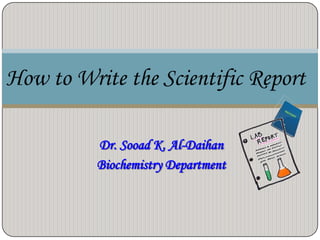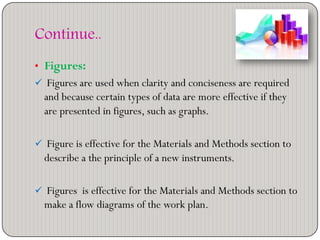The document provides guidance on how to structure and write an effective scientific report, outlining the main sections including the introduction, methods, results, and discussion, and emphasizing the importance of clearly communicating the objective, methodology, findings, and conclusions of the study. Key aspects of each section are defined, such as stating the hypothesis in the introduction and presenting results objectively without interpretation in tables and figures in the results section. Proper scientific writing conventions including using the past tense to describe completed work and defining abbreviations are also covered.
































